Multi-use of marine space is an instrument for the optimal use of scarce space without exceeding the carrying capacity of the ecosystem. In the relatively small Belgian part of the North Sea, research into such possibilities for multi-use of marine space is becoming increasingly necessary.
UNITED, an international research and innovation project co-financed through the European Union’s Horizon 2020 programme (running from 2020 to 2023), does just that. UNITED stands for Multi-Use offshore platforms demoNstrators for boostIng cost-effecTive and Eco-friendly proDuction in sustainable marine activities, and aims to demonstrate the viability of multi-use of marine space through the development of five demonstration pilots in the European marine environment.
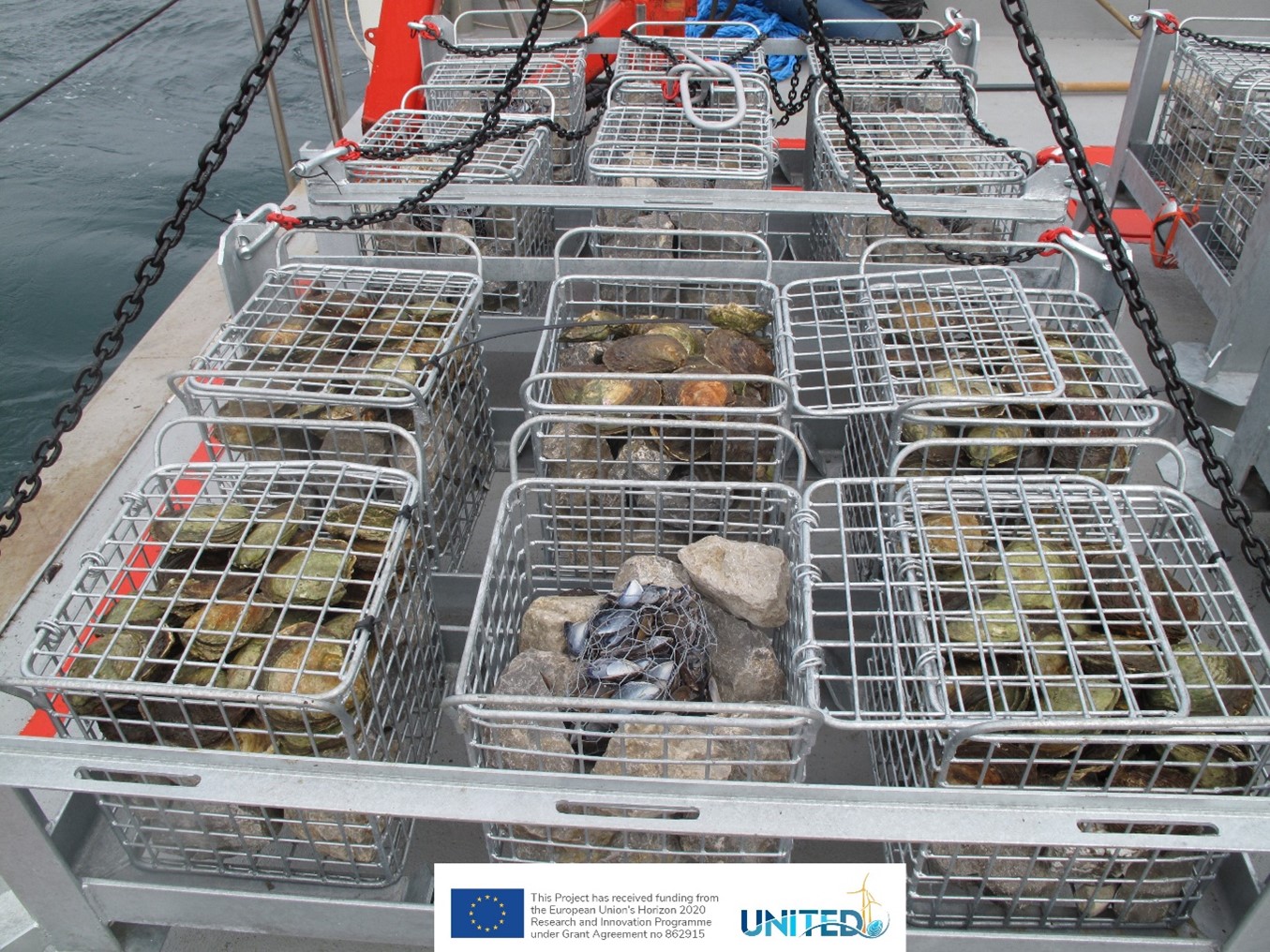
Within UNITED, the Belgian pilot project, coordinated by Ghent University, and partnered by Jan De Nul Group, Brevisco, Colruyt Group, Parkwind and the Royal Belgian Institute of Natural Sciences (RBINS), combines aquaculture and ecological restoration of European flat oyster (Ostrea edulis) reefs with cultivation of sugar kelp (Saccharina latissima) in an offshore wind farm. Before going offshore, several materials and methods are evaluated in a nearshore test site at the Westdiep area (5 km off the coast of Nieuwpoort, Belgium). The most promising techniques are further optimised nearshore and subsequently applied offshore.
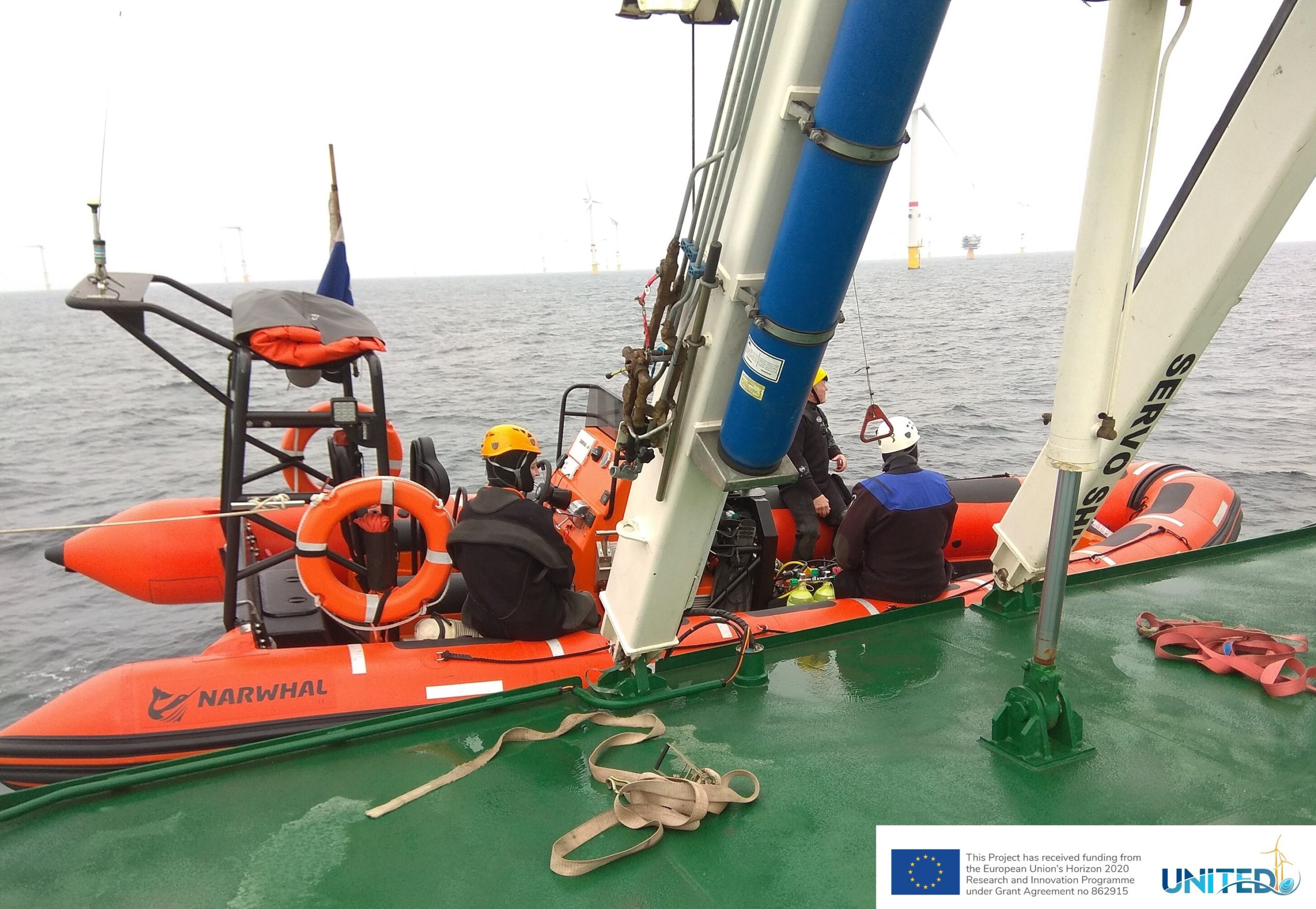
Ideal monitoring conditions
Spring 2022 kicked off with some bright and sunny days. This allowed the project partners to monitor the 2nd generation of seaweed nets at the nearshore test site (a first generation of nets was tested in 2020-2021) and also provided them the opportunity to organise the first offshore scientific diving campaign to inspect the oyster restoration structures. The structures used are gabions, filled with scour protection material, shell material and partly also with living adult flat oysters (Figure 1), and aim to identify best suitable substrates and conditions for flat oyster settlement and reef restoration. The restoration structures are installed on the scour protection of several monopiles within the Belwind offshore wind farm.
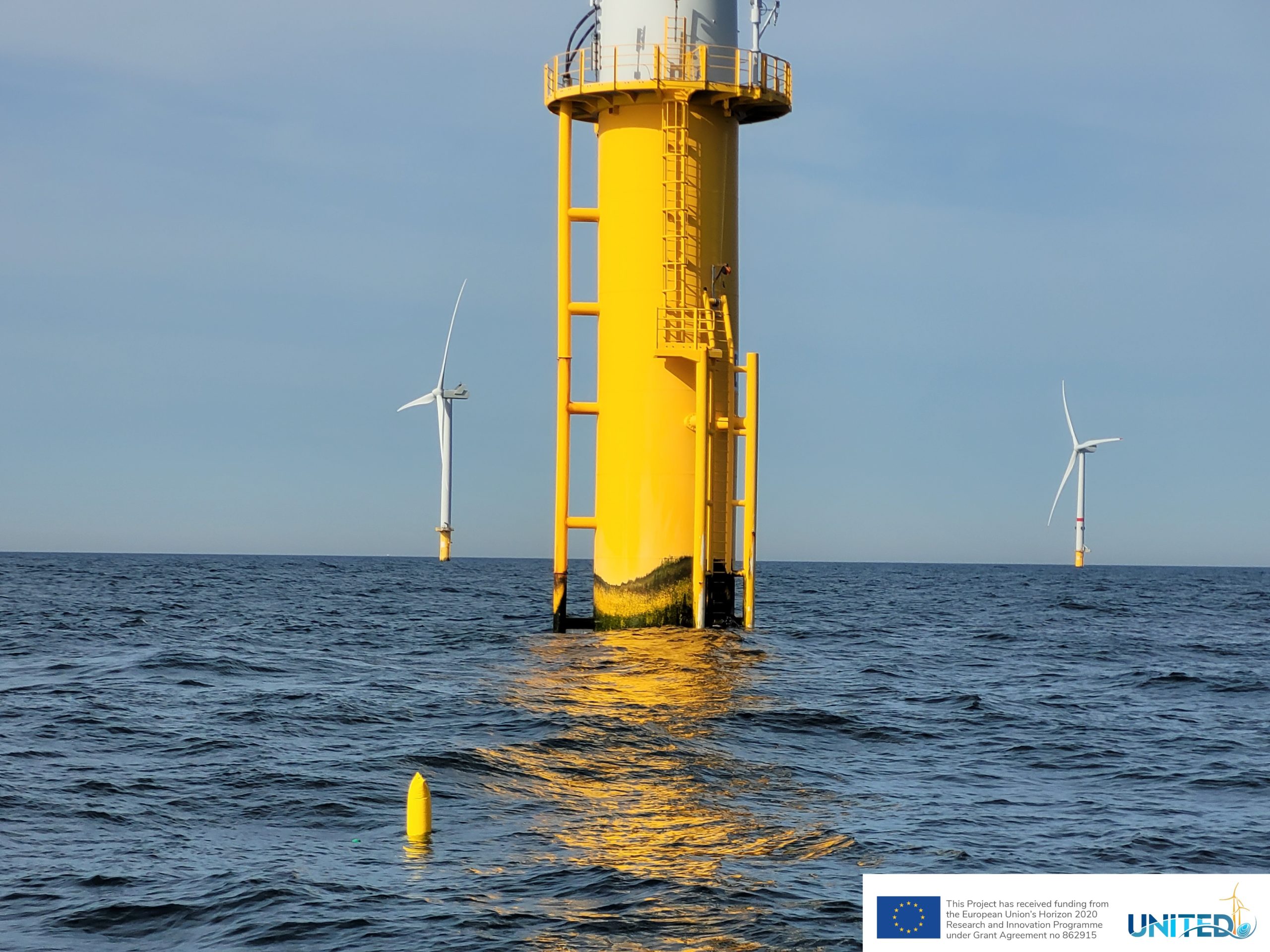
Under the scientific diving lead of Alain Norro (RBINS), and through the coordination by Parkwind, the oyster restoration structures were successfully sampled and brought on board for further inspection (Figures 2 and 3). Sampling was partly conducted from the new research vessel RV Belgica, with spacious laboratories that allowed for immediate processing of part of the samples.
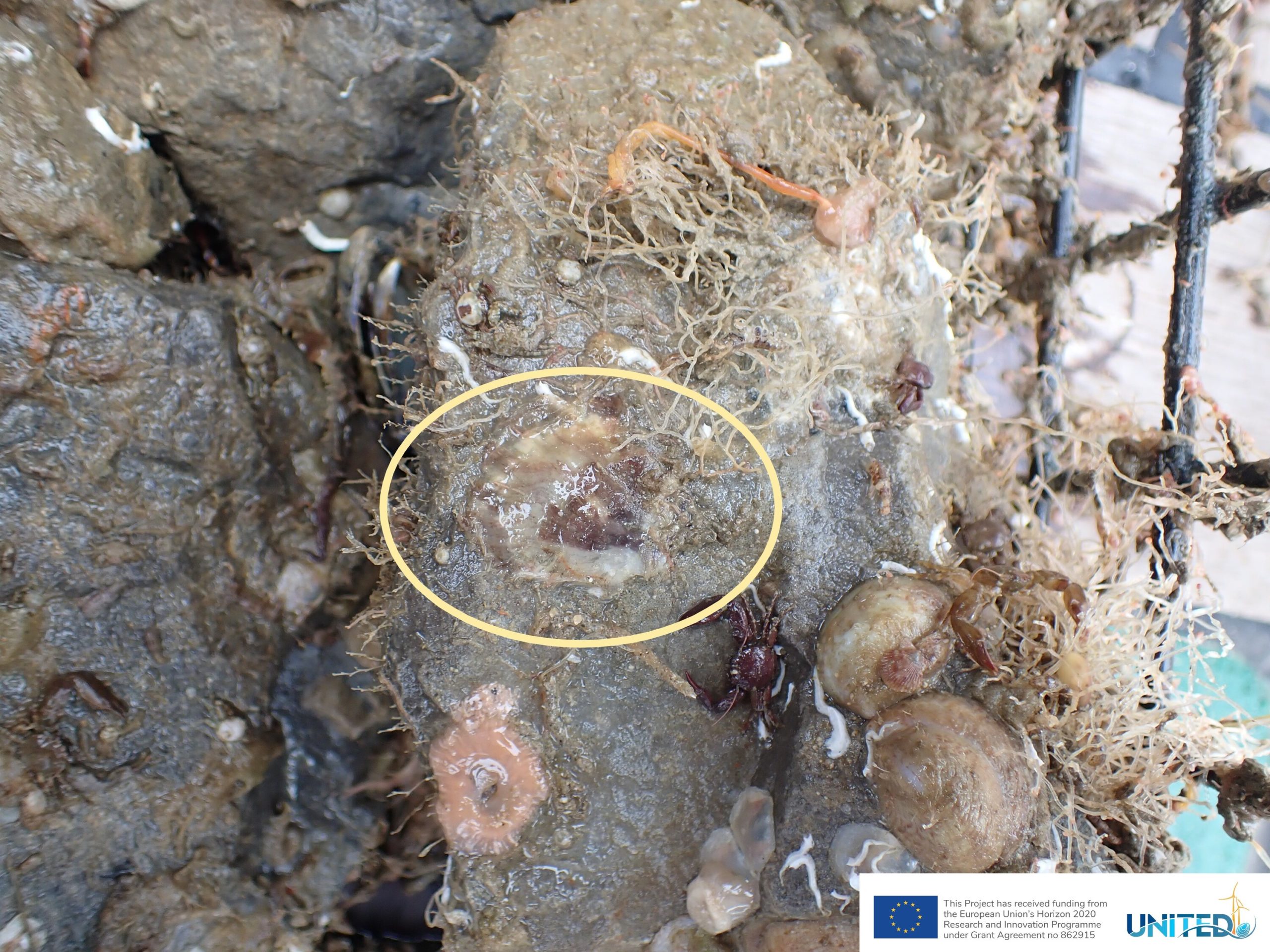
Promising results
The RBINS and Ghent University (Artemia Reference Center, ARC) teams discovered successful settlement of juvenile flat oysters on the added materials (Figure 4), in numbers that have never before been observed in the Belgian offshore wind farm zone. An additional interesting observation was the presence of tube-building polychaete worms (Sabellaria spinulosa, figure 5), which are, under certain conditions, capable of forming reefs, as was also apparent here. Although these are only small-scale results, they are promising for future restoration efforts of biogenic reefs in the Belgian part of the North Sea.
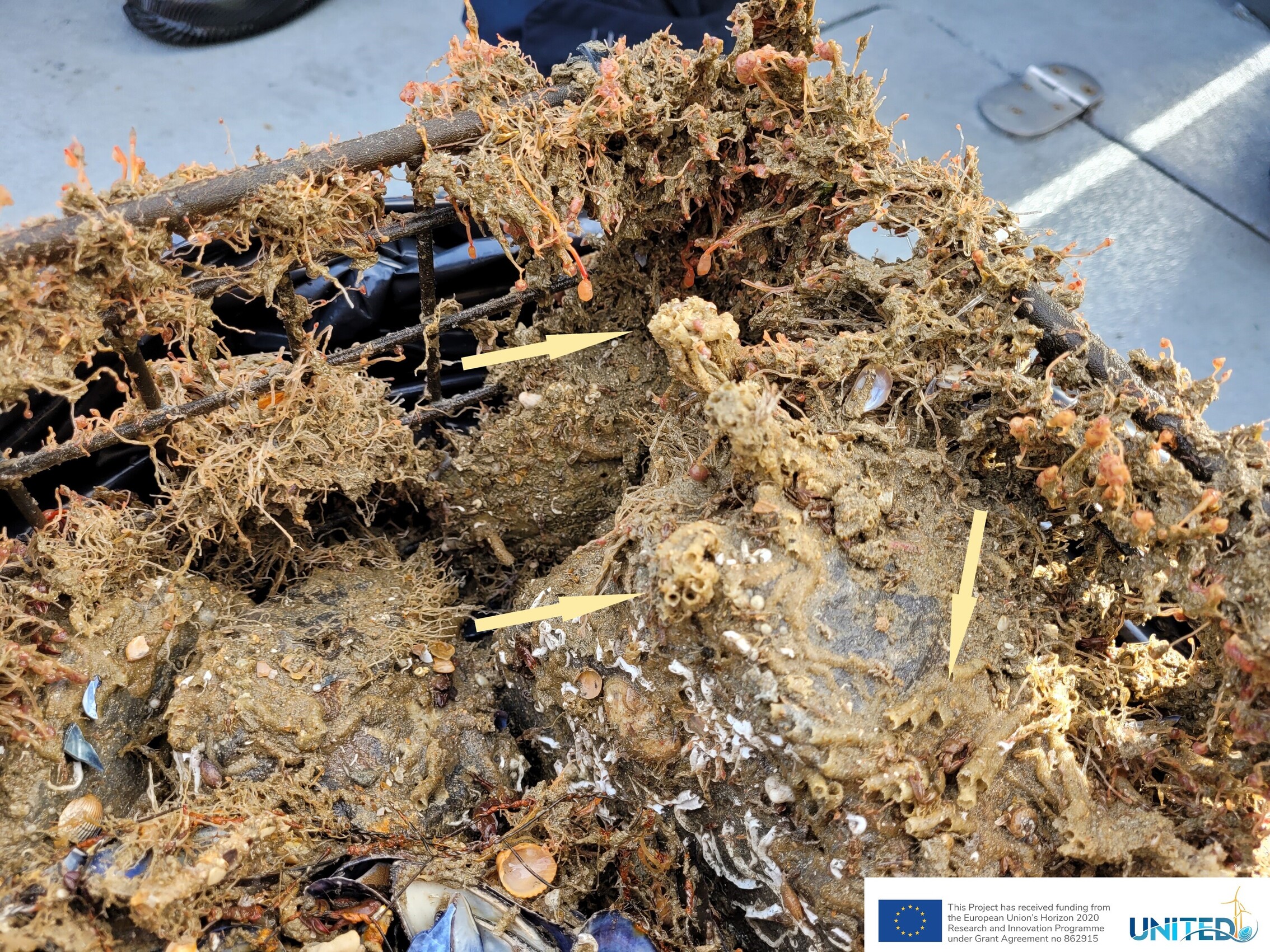
At the same time, the Ghent University (Phycology) and Brevisco teams sailed with the “Stream” to the Westdiep test site to check up on the seaweed cultivation trials. One of the aims of these trials is to determine the best feasible way to cultivate sugar kelp in the Belgian part of the North Sea. Following the first successful seaweed harvest in May 2021, the researchers are now fine-tuning the best practices to optimise sugar kelp growth for the upcoming cultivation trials in the offshore wind farm in the next growing season (2022-2023). To do so, juvenile sugar kelp was seeded on different substrates using several techniques. These seeded substrates were installed at Westdiep in November 2021. Over winter, the small juvenile sugar kelps of around 1 cm in length have grown substantially. They now cover a considerable surface of the substrates (Figure 6), setting the scene for another promising harvest in May 2022.
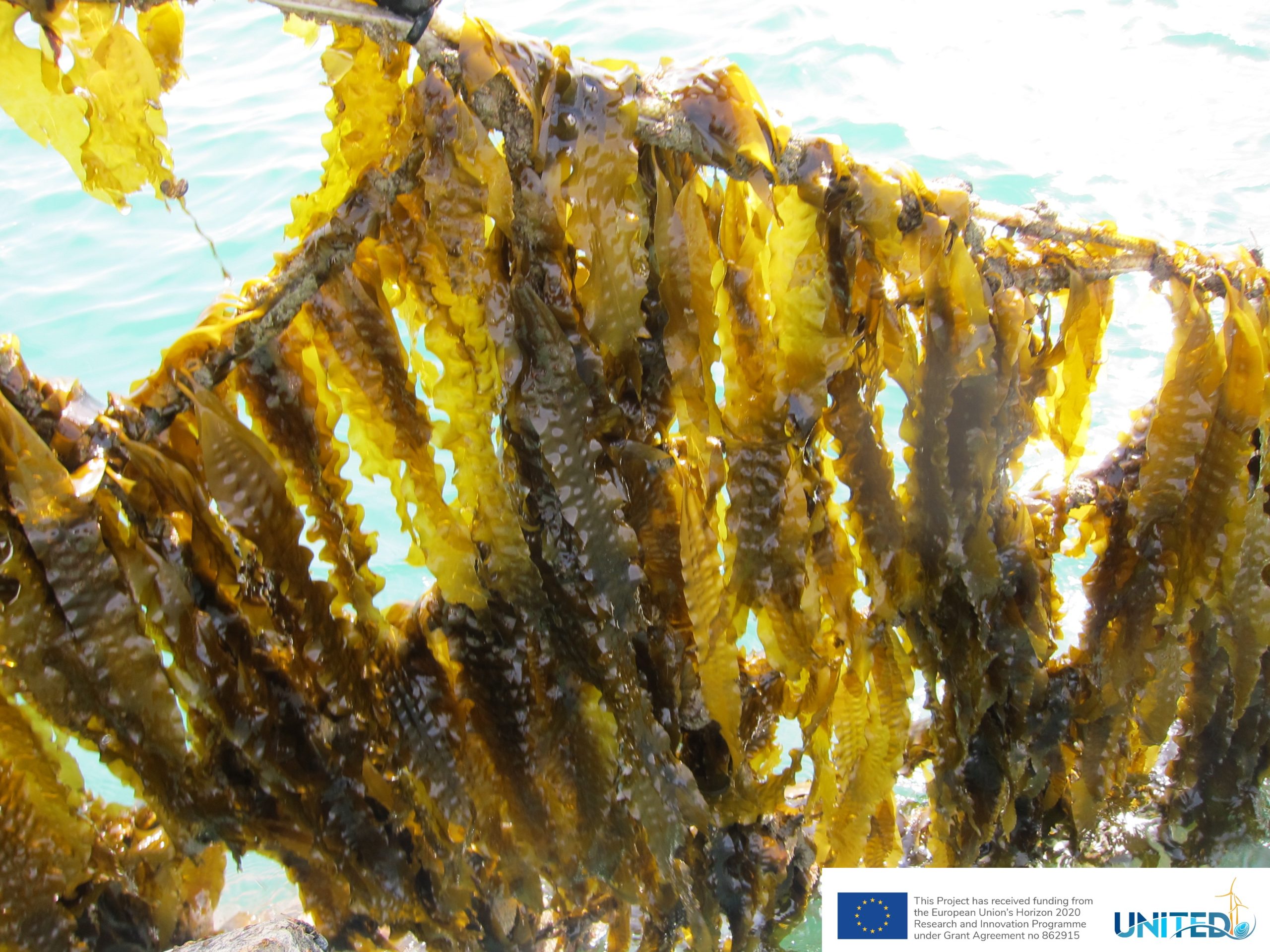
Text by Thomas Kerkhove (RBINS), Jessica Knoop (Ghent University-Phycology) & Annelies M Declercq (Ghent University-ARC).

